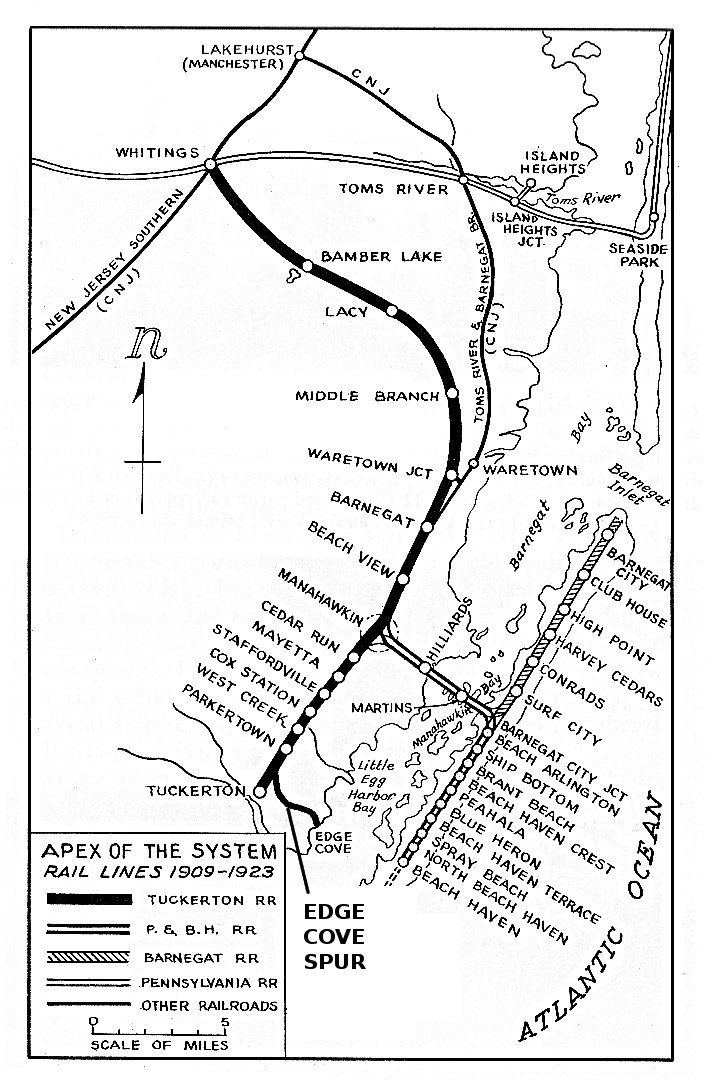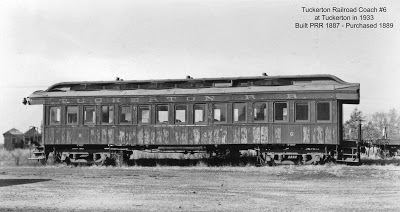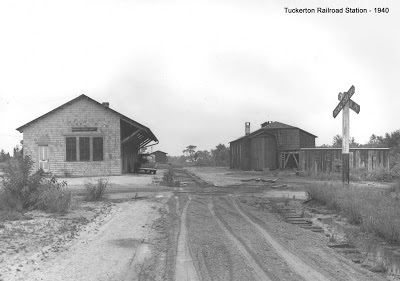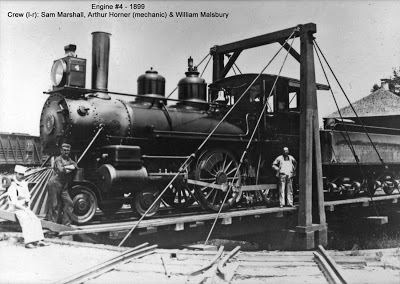Headquarters Tuckerton | Dates of operation 1871–1940 | |
 | ||
Track gauge 4 ft 8 ⁄2 in (1,435 mm) standard gauge | ||
Welcome to jersey shore live steam the tuckerton railroad
The Tuckerton Railroad (reporting mark TRR) was a railroad that operated in New Jersey from 1871 to 1936. The Southern New Jersey Railroad operated part of the line from 1937 to 1940.
Contents
- Welcome to jersey shore live steam the tuckerton railroad
- 19th Century
- 20th Century
- 21st Century
- References

19th Century

1871 Tuckerton Railroad (TRR) is built from Whitings to Tuckerton with 50 lb. rail. Two 4-4-0 wood burning engines are ordered. Track is built past Tuckerton station to the waterfront at Edge Cove for connections to steamships taking vacationers to Long Beach Island (LBI) during summer months. Connections with the Pemberton and New York Railroad, later part of the Pennsylvania Railroad (PRR), and the New Jersey Southern Railroad (NJS), later part of the Central Railroad of New Jersey, (CNJ) are made at Whitings. The route from Whitings toward the coast traverses part of the Pine Barrens region.

1872 Toms River and Waretown Railroad (TR&W) is built and physically connected with the TRR at Waretown Jct. and is leased to the NJS.
1872-1874 Tuckerton RR runs through trains 55 miles from Tuckerton to Toms River via rights over the TR&W.
1874 TRR officials discuss options of building track to Trenton.
1879 TR&W builds an extension to Barnegat, running parallel with the TRR for about 2 miles.

1881 PRR builds a line from Whitings to Toms River and across the bay to Seaside Park and Bay Head Jct. to connect with the NY&LB. This opened up resorts north of Long Beach Island to Philadelphia traffic.

1884 Engine No. 3, coal burning instead of wood, is ordered from Baldwin to handle the planned construction of the Long Beach Railroad.

1885-1886 Long Beach Railroad is graded and a trestle is built from Manahawkin to Long Beach Island. It is built with 60 lb rail on the island connecting Barnegat City to Beach Haven, and leased to the PRR.

1887 Dissatisfaction with the long route via Whitings leads to planning for a 32-mile shortcut from Medford to Manahawkin to shorten the time to Long Beach Island, but the line is not built. TRR purchases a caboose.

1889 Locomotive No. 4 is ordered, another 4-4-0 coal burning engine. Engine No. 1 has been converted to coal. No. 2 needs to be rebuilt and gets sidelined. No. 3 is reported overworked. Combine No. 5 and Coach No. 6 are purchased used from the PRR.
1891 Engine No. 2 is not rebuilt, and instead the TRR purchases another 4-4-0, No. 5
1892 TRR owns 9 box cars, 11 flat cars. LBI traffic is noted as being less than expected and causing a drain on resources for the TRR.
1893 Again, a shortcut is planned. The panic of 1893 terminates any future discussions regarding new routes. The Barnegat City branch is foreclosed by the Pennsylvania Railroad (PRR), and all train service on it is terminated.
1894 Long Beach Railroad is officially dissolved and broken into two pieces.
The connecting track from Manahawkin to Barnegat City Junction and the southern section to Beach Haven is reorganized as the Philadelphia and Beach Haven Railroad. This line is then leased to the PRR.
The northern portion is reorganized as the Barnegat Railroad. The PRR owns all the rolling stock.
The Manahawkin and Long Beach Transportation Company is created to run trains from Barnegat City Junction to Barnegat City, since the PRR (and thus TRR) would not run trains to Barnegat City anymore.
1894 TRR Engines No. 1 and 2 are scrapped.
1895 Fire in Tuckerton damages Engines No. 3 and 4, leaving only Engine No. 5 in service.
1900 Through passenger service is established by the PRR between Camden and Beach Haven. Fare is set at $2 for a round-trip ticket. Among the people riding the train to Beach Haven in subsequent years is family of author Catherine Drinker Bowen. She describes her family's annual June trip to their summer house as "... the trip down began for us in a ferryboat from Philadelphia to Camden, then the dusty, cindery cars, very stuffy until we reached the bridge and the bay, when a life-giving air came suddenly, as if someone opened a door."
20th Century
1908 PRR cancels the Manahawkin & Long Beach Transportation Company's lease of Barnegat Railroad due to track conditions. The TRR will now operate this line again.
1910 A new engine No. 6, 4-4-0 American style, replaces 25-year-old Engine No. 3.
1912 Freight receipts begin to outpace passenger receipts.
1913 There are now three round trips scheduled between Whitings and Beach Haven as passenger traffic slowly increases. PRR cooperated with the TRR and installed a block signal system between Whitings and Beach Haven for the summer months. In winter months the equipment was removed and stored for the next season. The track in Whitings is reconfigured and the wye is eliminated. A turntable is installed to be able to turn engines. Speed limits on the line from Whitings to Manahawkin are set at 60 MPH to match the PRR's line from Camden.
1914 First automobile bridge is completed from the mainland to Long Beach Island.
1915 TRR purchases a steel suburban MP54 coach from PRR, which becomes No. 7.
1917 World War I causes a major drop in passengers to the shore.
1918 Federal control of all railroads in America due to World War I affects the Tuckerton Railroad. Engine No. 7 is ordered, a 4-6-0. Engine No. 4 is sold.
1923 Barnegat Railroad is officially abandoned. Tracks are quickly removed. Passenger volume slowly falls.
1925 Freight tonnage is almost doubled with moving cement, sand, fill, and stone for the new NJ State Highway No. 9 which is parallel to the TRR.
1926 Passenger volumes decline rapidly.
1927 Coach No. 7 returned to PRR, becoming PRR No. 389.
1929 Passenger totals for the year are only 20% of 1920 figures. The TRR had higher than average freight tonnage due to building of the automobile causeway to LBI. A second hand engine is purchased, No. 14, 4-4-0 type. Remaining passengers are accommodated on borrowed PRR MPBM54 passenger-baggage-mail combine, usually No. 5208.
1930 Last year of TRR profitability
1931 Bus service is coordinated with the PPR for trains at Manahawkin to Beach Haven. TRR combine No. 5 is dismantled, coach No. 6 is used as a caboose, eventually gets sidelined and never used again. Engine No. 14 flips on her side but gets repaired, only to have a grade crossing accident which puts her out of service for good. Scheduled freight train service ends; all movements on the line are now by train order only.
1932 Some TRR passenger trains only record an average of 2 passengers per day.
1933 The TRR is mortgaged and the banks’ name "Camden Safe Deposit & Trust Company" is painted under the railroad's name on most equipment. Weekday passenger service to Long Beach Island is terminated. Weekend service continues.
1935 On Nov. 16, a nor’easter storm strikes the LBI area. Engine No. 7, with a freight train makes its way from Beach Haven across the bridge to the mainland despite waves breaking over the rails. The next day a tidal swell washes away the bridge to LBI, effectively ending all service, and stranding a lone, empty gondola car on the island. The gondola car is retrieved by truck, one trip for the body and a second trip for the trucks.
1936 Tuckerton Railroad requests abandonment proceedings. Alternatives to TRR operations are considered by the on-line businesses. The most likely carrier would have been the Central Railroad of New Jersey (reporting mark CNJ), operating the line from its Toms River branch which terminated in Barnegat. The CNJ declines, stating the time to get to Barnegat is already 8 hours, and a trip further to Tuckerton and back would have required overtime hours, and that would have not been profitable for the little traffic moved.
January 31, 1936, the last train runs on the TRR.
March 26, 1936 H. E. Salzberg Co, a salvage firm buys the assets of the TRR with intent to operate or salvage the line.
1937 The new operator is named as Southern New Jersey Railroad Company, Inc. (SNJ), as repairs to Engines No. 5 and 6 stored in Tuckerton begin. The connection at Barnegat with the CNJ is used, enabling abandonment of the Barnegat to Whitings part of the line. Rails are removed from Long Beach Island.
1938 SNJ shows a small profit of $616.
1939 NRHS railfan trip on the SNJ on April 16, 1939. CNJ Blue Comet equipment shows up in Barnegat and SNJ Engine No. 5 and 6 take the coaches to Tuckerton.
1940 Due to minimal traffic, and expected traffic that had converted to trucks, an application for abandonment of SNJ is submitted. Last revenue box car for Tuckerton on SNJ is shipped August 20. Scrapping of the line begins. Engine No. 5 pulls the scrapping train towards the CNJ's Barnegat interchange. When the scrapping is finished, old Engine No. 5, 50 years old at this point, is cut up on site in Barnegat.
1941 Last shipment from SNJ, consisting of three cars of scrap, leaves Barnegat January 16.
1973 The last piece of TRR track, used in Barnegat as a siding by the CNJ, is taken up in the spring.
21st Century
2007 Jersey Shore Live Steam organization plans to rebuild the Tuckerton Railroad in 1/8 scale in a 64-acre park in New Gretna, New Jersey. The organization is a 501c non profit organization.
